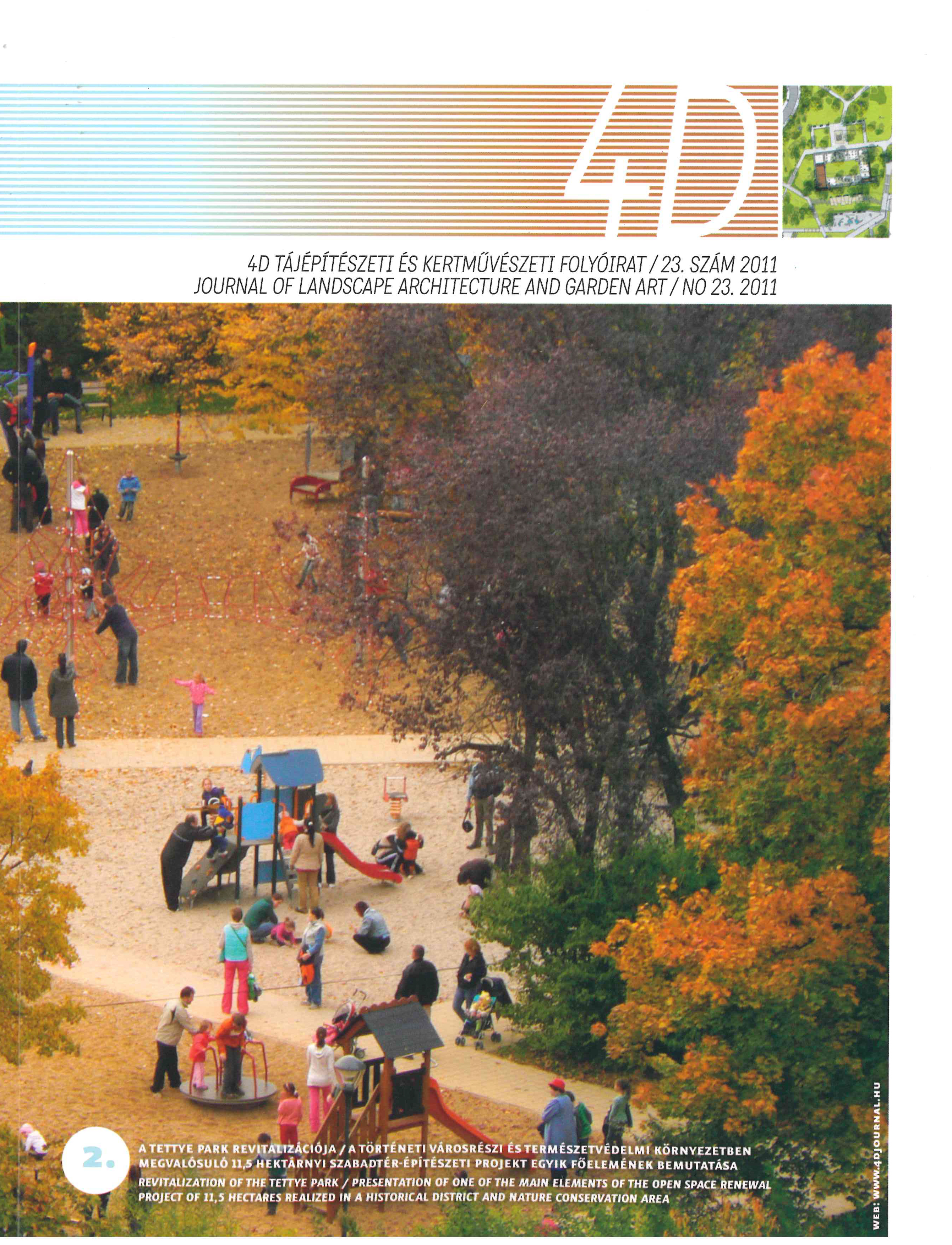Analysis of spatial experience - the example of the graden of Versailles
DOI:
https://doi.org/10.36249/4d.23.5860Keywords:
Garden of Versailles, open space, spatial planningAbstract
In current theoretical literature on land- scape architecture, the debate "space" versus "piacé" opposes two types of spatiality: the abstract homogeneous space of Science, and the meaningful space (piacé) of everyday life . The strongly geometrical garden types - such as the so-called French "classical" garden - are often accused of dismissing the experiential, place-making qualities of spatial design, and are opposed to more fluid geometries, such as that of the English "landscape" garden.
This debate arises from a mistaken opposition between two modes of perceiving and manipulating space. Indeed, it is nőt their opposition, bút their association in a variety of combi- nations that allows fór the experiential richness and the unique spatial expe- rience offered by a specific place/space, such as, fór instance, the Gardens of Versailles.
References
Bacsó B., szerk., 2011. Tér fenomén mű, Budapest, Kijárat kiadó.
BerthozA., 1997. Le sens du mouvement, Paris, Editions Odile Jacob.
Berthoz A., 2000 (1997). The Brain's Sense of Movement, Harvard University Press.
Casey E., 1998. The Fate of Place.
A Philosophical History, Berkeley, University of Califomia Press.
Genette G., 2010 (1994,1996). L'oeuvre de l'art. I: Immanence et transcendance. II:
La relation esthétique, Paris, Seuil.
Genette G., 1997 (1994). The Work of Art: Immanence and Transcendence, Ithaca, Cornell University Press.
Genette G., 1999 (1996). The Aesthetic Relation, Ithaca, Cornell University Press.
Gibson J. 1979. The Ecological Approach to Visual Perception, Boston, Houghton Mifflin.
Gyáni G., 2008. Budapest - túl jól és rosszan.
A nagyvárosi múlt mint tapasztalat. Budapest, Napvilág Kiadó.
Husserl E., 2011. « Dolog és tér », in : Bacsó B., Tér Fenomén Mű, Budapest, Kijárat Kiadó, 2011. Merleau-Ponty M., 1981 (1945).
Phénoménologie de la Perception, Paris, Gallimard.
Merleau-Ponty M., 2005 (1945).
Phenomenology of Perception, London, Routledge.
Moles A., Rohmer E., 1982. Labyrinthes du vécu. L’espace: matiére dáction, Paris, Librairie des Méridiens.
Moravánszky Á., Gyöngy K., 2007. A tér, Budapest, TERC.
Petitot J., 2004, Morphogenése et esthétique, Paris, Maisonneuve et Larose.
Straus (Erwin), 1935. Vöm Sinn der Sinne, Berlin, Springer Verlag.
Straus (Erwin), 1963 (1935). The Primary World of Senses: a Vindication of Sensory Experience, London, Collier-MacMillan.
Szántó C., 2009. Le promeneur dans le jardin de lapromenade considérée comme acte esthétique. Regards sur les jardins de Versailles, ENSA Paris-La Viliette / Université Paris-VIII, http://lcv.hypotheses.org/3058
Valéry P., 1962. Ecrits sur l'art, Paris, Club des Libraires de France.
Wallon H., 1970. De l’acte á la pensée, Champs- Flammarion.
Welton D., ed., 1999. The Essential Husserl: Basic Writings in Transcendental Phenomenology, Bloomington, Indiana University Press.
Downloads
Published
Issue
Section
License
Copyright (c) 2024 Szántó Catherine

This work is licensed under a Creative Commons Attribution-NonCommercial-NoDerivatives 4.0 International License.
A folyóirat Open Access (Gold). Cikkeire a Creative Commons 4.0 standard licenc alábbi típusa vonatkozik: CC-BY-NC-ND-4.0. Ennek értelmében a mű szabadon másolható, terjeszthető, bemutatható és előadható, azonban nem használható fel kereskedelmi célokra (NC), továbbá nem módosítható és nem készíthető belőle átdolgozás, származékos mű (ND). A licenc alapján a szerző vagy a jogosult által meghatározott módon fel kell tüntetni a szerző nevét és a szerzői mű címét (BY).



